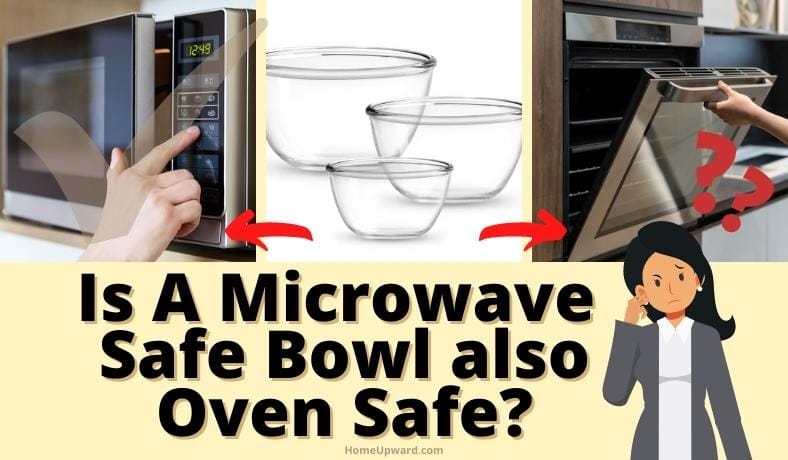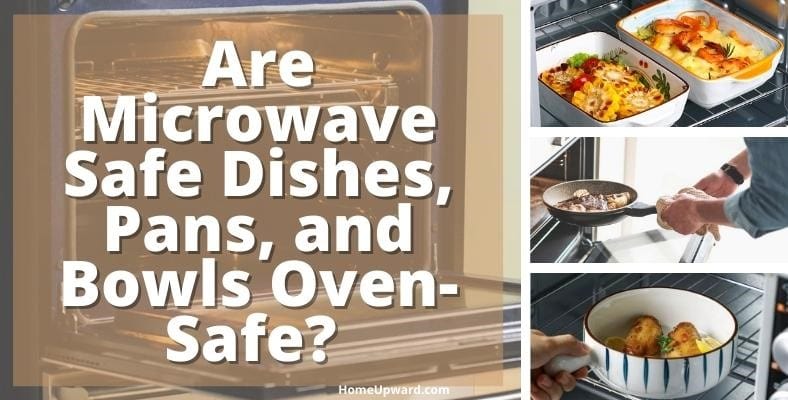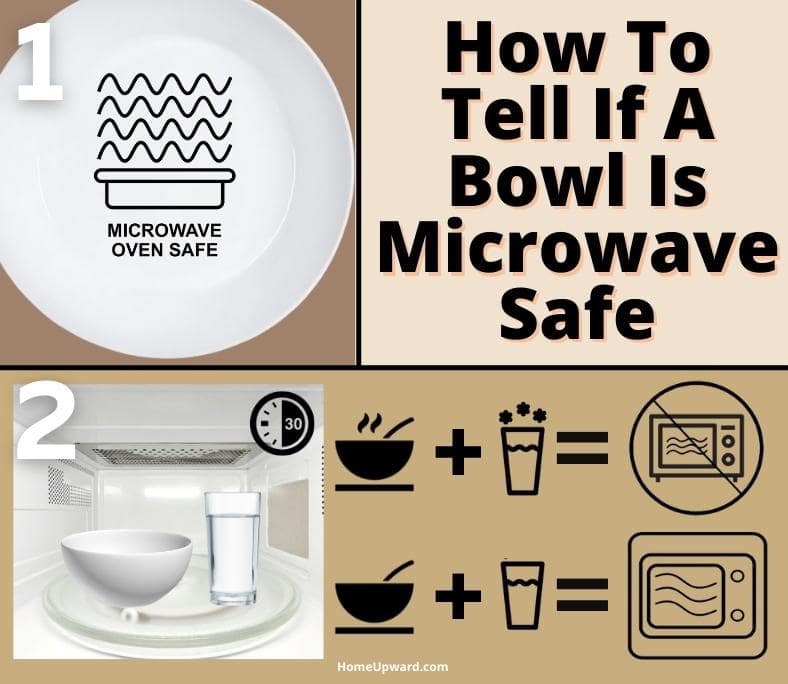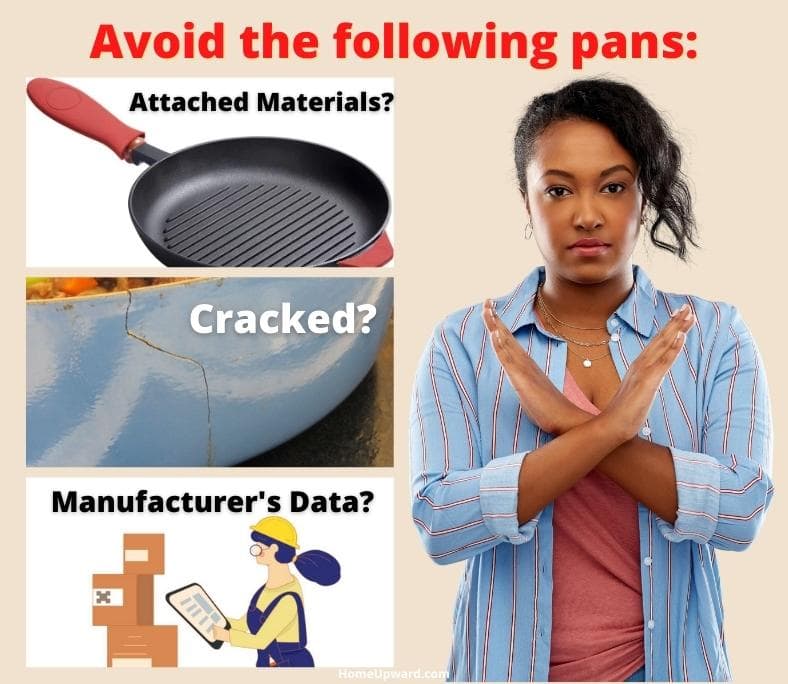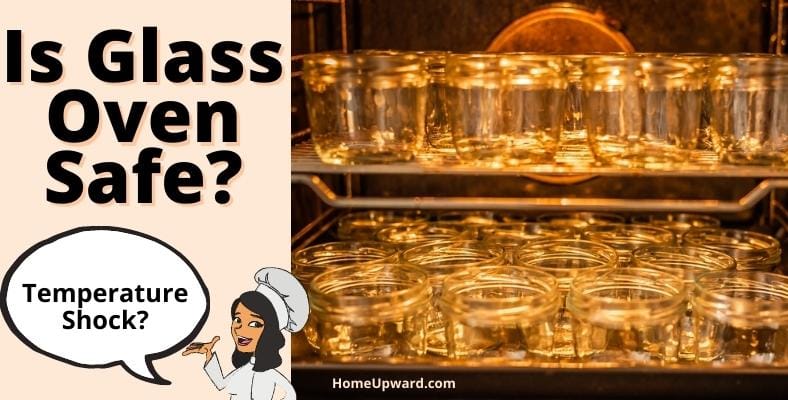Wondering if you can use a microwaveable bowl in your oven too? Although it might seem like you can, the truth is actually pretty different as you’ll see here.
Read on to find out why!
Contents
If A Dish Is Microwave Safe, Is It Oven Safe? What About Pans & Bowls?
What Does Microwave Safe Mean?
Microwave safe means that the kitchenware you put in the microwave isn’t at risk of causing property damage or seriously harming you.
To work, microwaves beam microwave radiation through the materials inside. They can’t heat things like glass, plastic, rubber, or ceramic but will heat the food found inside these materials.
Most microwave-safe food containers will have a microwave-safe approval either on the bottom of the product or on the box it came in. However, not all materials have this seal of approval.
Some materials might be microwave-safe but not have the label, while others won’t be but still lack a non-microwavable warning. It’s tricky, for sure.
Microwave Vs. Oven Safe Differences Explained
The main difference between microwave and oven-safe materials is that microwave radiation passes through some materials, making them incapable of heating up.
Ovens, on the other hand, indiscriminately heat everything inside them. That means that the same microwave-safe materials may crack or explode in an oven that gets hot enough.
For example, that Tupperware container that you threw into the microwave will definitely melt under the intense heat of an oven.
Something else to consider is that while metal is generally unsafe in microwaves, it’s usually perfectly fine in ovens. Aluminum might spark and catch fire in a microwave, but it will stay safe under an oven’s heat.
How To Tell If A Bowl Is Microwave Safe
If you’ve just gotten a brand new bowl, you might want to test out how safe it is in the microwave. Testing microwave safety is pretty straightforward.
First, check the bottom of the bowl or its packaging to see if there is a microwave safety label anywhere. The brand often tells you directly whether you can microwave their product or not, so this should be your first way of determining your bowl’s microwave safety.
Next, if the brand doesn’t give you this information, it’s time to experiment. Place your bowl or container in the microwave along with a cup of water for 30 seconds on high. Make sure the cup is microwave safe first. If the bowl is hot and the water is cold when you take both out, the bowl is not microwave-safe. Should the water be warm and the bowl is cold, then it’s totally safe.
It’s worthwhile to note that most ceramic, glass, and plastic bowls are microwave-safe, even if they don’t have a safety label. You can test them with the method we’ve mentioned above, but you’re almost always good with bowls made out of these materials.
How To Tell If A Pan Is Oven Safe
Often, people leave food out on the stove for a while, and it goes cold. While it can be tempting to throw the whole pan in the oven to save time, it’s important to read this before you do.
Essentially, some pans are oven-safe while others are not. There are a few simple ways to check to make sure your pan is oven-safe. If you don’t, you run the risk of damaging the pan or contaminating the food with chemicals or other harmful substances.
Manufacturers make almost all metal pans at much higher temperatures than your oven can, meaning almost all pans are oven safe. However, if your pan has any visible cracks, it might not be safe to use again in the oven, or the stove for that matter.
Also, you want to avoid any pans that have other materials attached to them, like a rubber handle. Rubber or plastic can melt in an oven. Though the pan itself will be safe, the other materials will not be.
Always double-check with the manufacturer’s data to make sure your pan is oven safe. If, for some reason, they say that their products are not, then you don’t want to push the limits to test it out.
How To Tell If A Skillet Is Oven Safe
Similar to most pans, your skillet will almost always be oven safe. Cast iron skillets, in particular, are well known for being the go-to tool to transfer into an oven. They won’t crack, and they don’t have any other materials that can melt or transmit chemicals under an oven’s heat.
However, your skillet may be on its last legs and shouldn’t go into the oven or over a stovetop. If it’s cracked, then heat will make it crack even more.
Moreover, while most skillets don’t have other materials, it’s vital not to use any skillet that has rubber or plastic on the handle or anywhere else. Check with the manufacturer to make sure, but most skillets will be perfectly fine in an oven.
How To Know If Glass Is Oven Safe
While most glass is oven safe, not all types of glass are made equally. The number one issue that can make it unsafe to use glass in the oven is something called temperature shock. Quickly changing the glass’s temperature can cause cracks and fissures to form much more rapidly.
For example, taking a glass bowl out of the oven and then dumping ice water into it is a surefire way for it to break. You need to gradually, rather than quickly, change the temperature to avoid this from happening.
If you don’t have the time for a gradual temperature change, try to use specialty glass instead. Pyrex, borosilicate, and tempered glass are all oven safe and resistant to damage from temperature shock.

